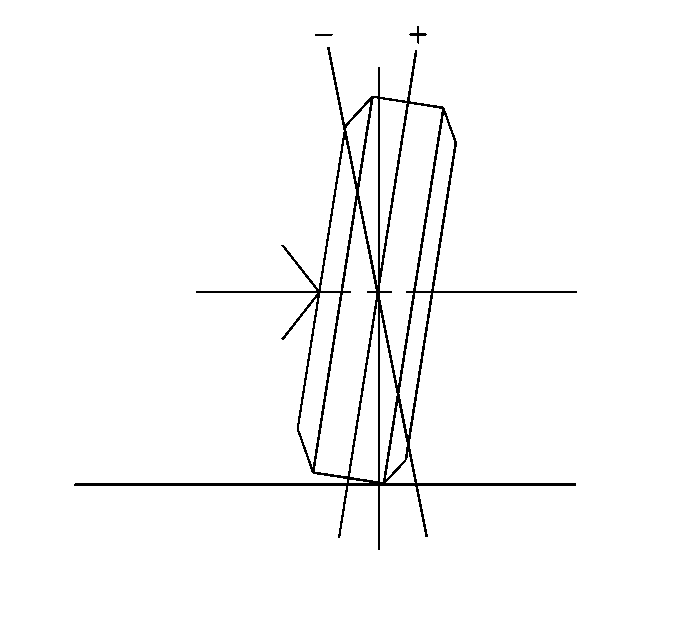Chevrolet Sonic Repair Manual: Camber Description

Camber is the tilting of the wheels from the vertical when viewed from the front of the vehicle. When the wheels tilt outward at the top, the camber is positive (+). When the wheel tilts inward at the top, the camber is negative (−). The amount of tilt is measured in degrees from the vertical. Camber settings influence the directional control and the tire wear.
Too much positive camber will result in premature wear on the outside of the tire and cause excessive wear on the suspension parts.
Too much negative camber will result in premature wear on the inside of the tire and cause excessive wear on the suspension parts.
Unequal side-to-side camber of 1 degree or more will cause the vehicle to pull or lead to the side with the most positive camber.
Cross Camber is the difference between the left camber value and the right camber value.
Cross Camber = L camber − R camber
 Aluminum Wheel Refinishing
Aluminum Wheel Refinishing
Finish Damage Evaluation Procedure
Note:
If the wheels are chrome-plated, do not re-plate or refinish
the wheels.
If the wheels are polished aluminum, do not r ...
 Caster Description
Caster Description
Caster is the tilting of the uppermost point of the steering axis either forward
or backward, when viewed from the side of the vehicle. A backward tilt is positive (+)
and a forward tilt ...
Other materials:
Front Side Door Opening Floor Carpet Retainer Replacement
Front Side Door Opening Floor Carpet Retainer Replacement
Callout
Component Name
1
Front Side Door Opening Floor Carpet Retainer Retainer
2
Front Side Door Opening Floor Carpet Retainer Clip
...
Timing Belt Idler Pulley Replacement
Timing Belt Idler Pulley Replacement
Callout
Component Name
Preliminary Procedure
Remove the timing belt. Refer to Timing Belt Replacement.
1
Timing Belt Idler Pulley Bolt
Caution: Refer to ...
Heated Oxygen Sensor Replacement - Sensor 1
Heated Oxygen Sensor Replacement - Sensor 1
Callout
Component Name
Warning: In order to avoid being burned, do not service the
exhaust system while it is still hot. Service the system when it is
cool.
Prelimi ...
0.0098
